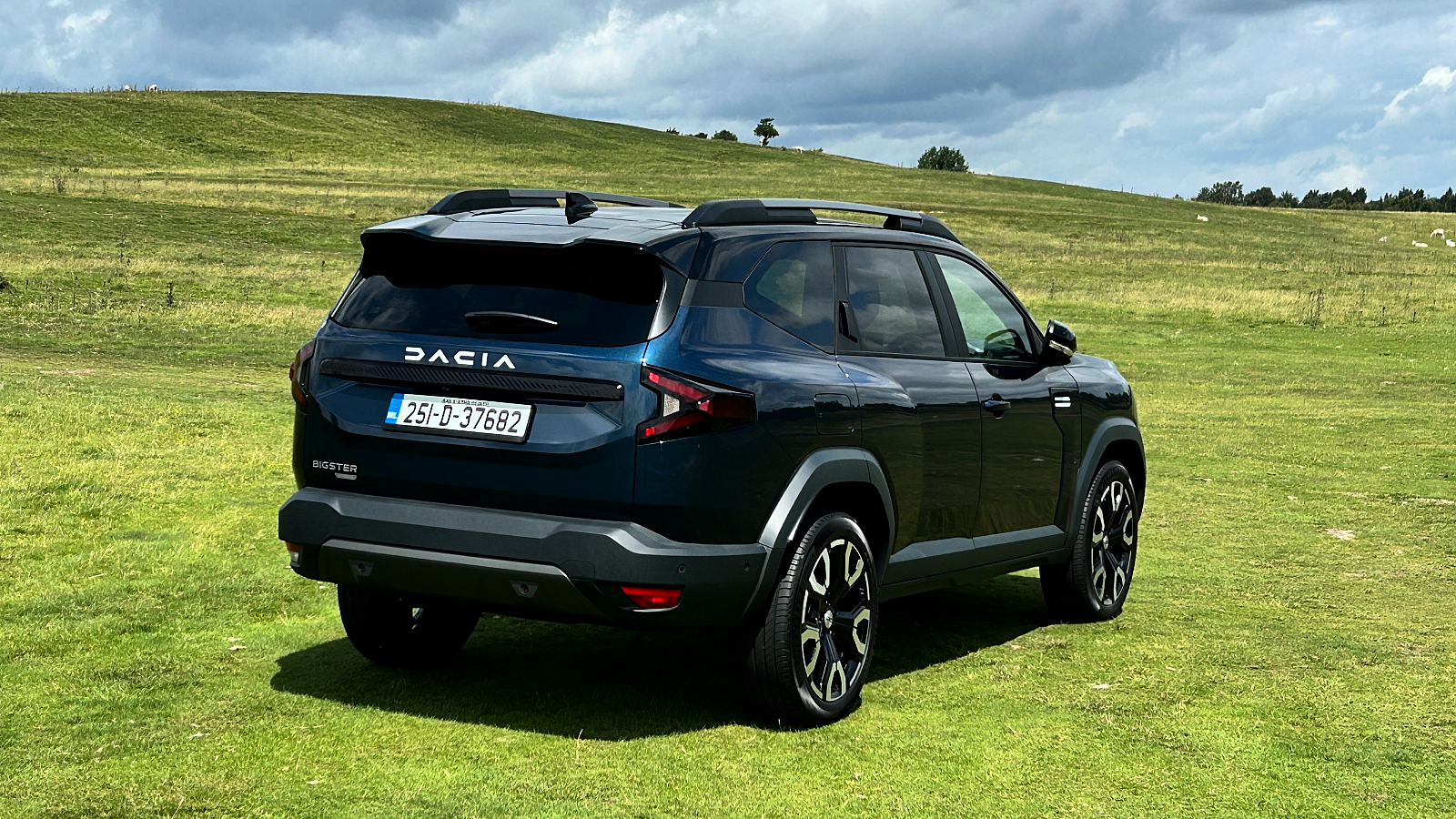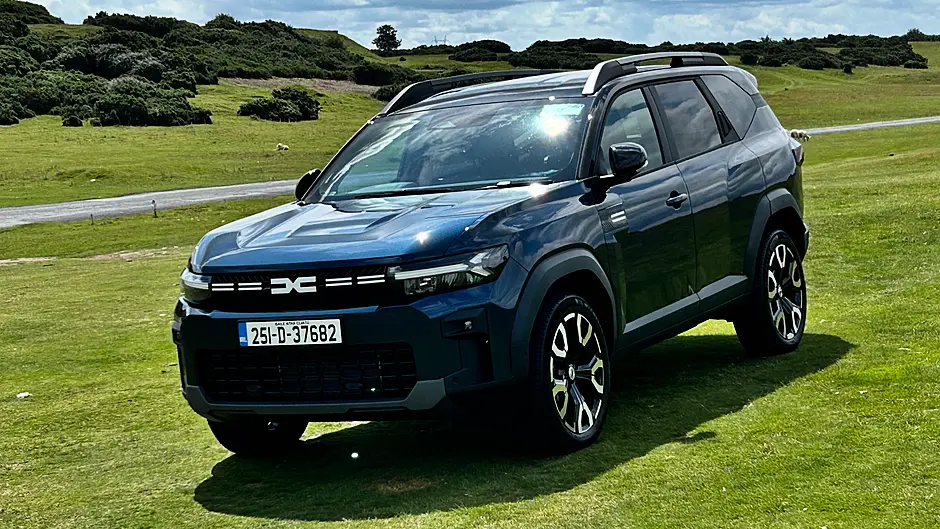Car names can be strange territory. Where they come from can be incomprehensible on occasion.
BY BRIAN BYRNE
There have even been times when a car maker has had to change the name of a model in a country where the original one is actually rude or downright insulting in the local language.
Dacia’s Bigster sounds odd. But I’m guessing the etymology is that it’s like a bigger Duster, so just merge the Big bit in.
Still sounds funny and I’m not sure it’s the kind of nameplate one will proudly flaunt in the pub.
That said, it’s a fair amount of car for the money, in Dacia budget tradition. Slotting in size between the Volkswagen Tiguan and the Toyota RAV4, even when you match the more expensive full hybrid version against the equivalents in those two, you’re going to save a substantial chunk of change.
Much more than beer money savings, and that could make the Bigster respectable in those pub conversations.
Even something to boast about.

The style follows the last changes made to the Duster, so there’s a lot familiar.
The looks are smart, without being outstanding, though detail in the wheels and the modular roof rails give a certain distinction. A roof-level spoiler over the back screen adds some rakishness. The two cars share a platform, so the width is exactly the same. But the Bigster is longer and taller. The wheelbase is a tad longer, not so much as to make the back seat legroom particularly roomier, but there’s certainly more cargo capacity. Which would make the car an attractive proposition for a family with growing teenagers and all the stuff their lifestyle requires.
The interior is Duster absolute. Same dashboard, instruments, graphics and controls — apart from the fact that my Bigster was automatic because of the full hybrid setup, and therefore had a different centre console. And I’m quite OK with that: the layouts work, the seats and driving positions are fine, the trim and upholstery materials are designed to be tough and hard-wearing. Somewhere in the website blurb on the Bigster I seem to remember a line “our most luxurious yet.” Dacia doesn’t do luxurious, but these days it doesn’t do mean either. So what it is is what you get and what we get is fine by me.

There are mild hybrid and full hybrid powertrain options, my review car having the latter in the car’s middle grade. The petrol part of the 155hp setup is a big 4-cylinder 1.8 lump, managed with a 7-speed dual clutch automatic. The shifting was smooth, sometimes when the petrol engine came in after a while of EV travelling it was noisy before it settled down into a higher gear. But mostly it proved to be a comfortable enough long-distance unit, and there’s a lot of EV driving in urban areas; Dacia claim up to 80 percent of the time. From an economy view, I returned 5.5L/100km, and that’s respectable in this size of a car.

There are basic driver ‘assists’, with the usual annoyances, but I love the Dacia habit of providing one simple switch on the dashboard that immediately turns off the ones you don’t want. (A couple of weeks ago I was in the US and my rental was a brand new Kia K4, and it was quite lovely that I drove for the week in a car that didn’t beep and bong chastisements at me by default.)
If I was still in my mid-late thirties with the family needs I had at that time, and the related cost of living overhangs, I’d have been considering very closely the value for car size that this Bigster offers. If it had been there. For those in that position today, make the most of the fact that it is.
And never mind the name ...











